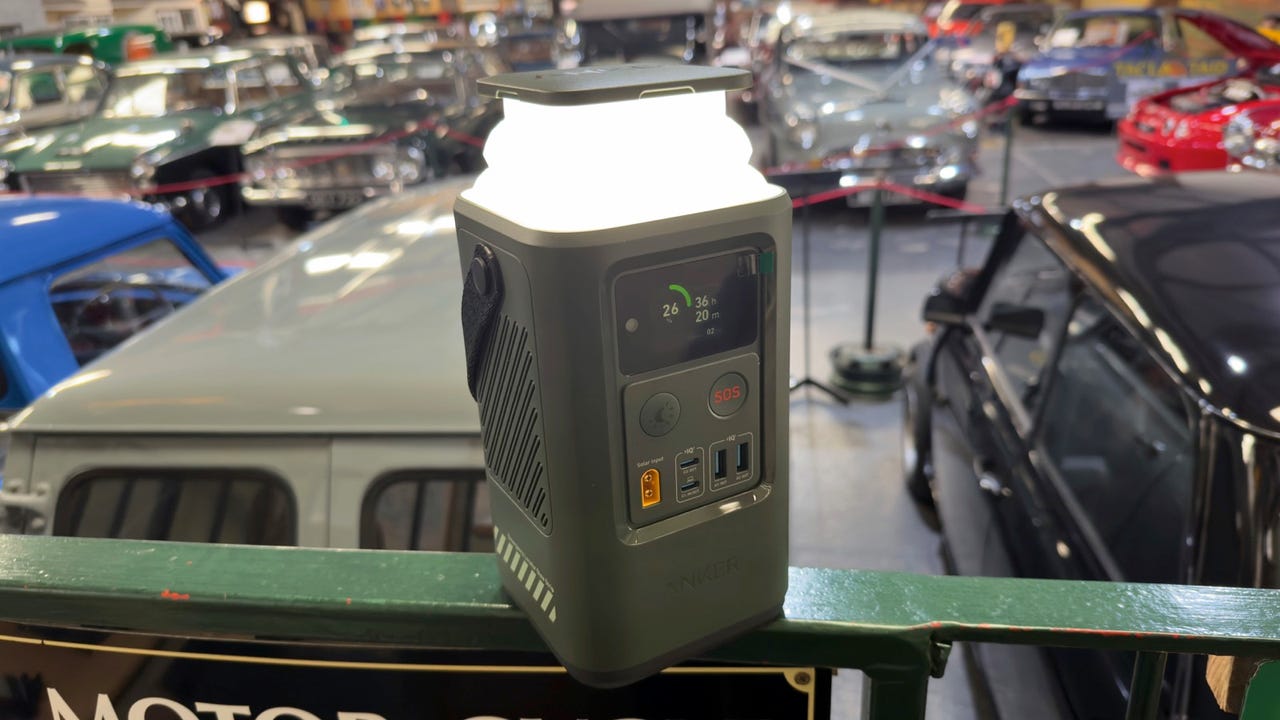
































As they become bigger, power banks are starting to blur the line between much bigger power stations. Is it a large power bank or a small power station? Does it even matter?
Also: Thebest portable power stations you can buy
I have a penchant for power banks, especially the sizable ones that can serve as backup power in emergencies. With a massive 60,000mAh battery capacity, theAnker 548 is the largest I've ever tested.
Firstly, the Anker 548 is indeed a substantial power bank. Weighing over five pounds and equipped with a soft nylon webbing handle on top, it's not something you'd easily carry in your pocket or bag. However, its size, and in turn its battery capacity, comes with significant advantages -- it can charge an iPhone 15 more than 10 times and a MacBook Air almost three times.
On top of the power bank, there's a pop-out LED light with three settings -- high, low, and SOS mode. This light casts a soft, broad glow, perfect for illuminating a room or campsite, and can last for nearly two days on a single charge.
Pop up light popped up!
The color and styling are very retro, looking more like a bit of old military kit than a modern tech gadget.
If you think this power bank is ideal for use as an emergency power supply, you're correct. Additionally, it employs LiFePO4 batteries combined with highly efficient standby circuitry, allowing the Anker 548 to retain 85% of its charge even after a year of not being recharged.
Also: My favorite power bank for traveling is waterproof and surprisingly lightweight
Regarding recharging, the unit can be charged via USB-C or an XT60 solar port (you'll need aseparate solar panel to do this). On the front, along with buttons for activating the LED light and the SOS feature, there is a smart LCD display that shows vital information such as battery level, input and output power, remaining charge time, charging modes, and more.
Anker 548 "smart display"
I've rigorously tested this power bank, checking the battery capacity, charge and discharge times, and the power outputs of the ports. The power bank passed all these tests with flying colors, meeting the high expectations I expect from any Anker product.
Also: The 5 tech gadgets I never hike without
A cool emergency feature of the Anker 548 is that you can leave it plugged in to a USB-C port and have the light come on automatically in the event of a power cut during the evening or night. This is perfect for use as an emergency night light.
To make it even more useful at night, there are glow-in-the-dark strips along each side of the unit. A small but nice touch!
Glow-in-the-dark strips along each side of the unit make it easier to locate at night!
The Anker 548 is an interesting device, straddling the line between power bank and power station. It doesn't have AC output like most power stations, but it can be recharged using solar. It also has a decent built-in light, and can retain a decent amount of charge for over a year, meaning it's the sort for of thing that doesn't need a lot of maintenance.
It's also available at a good price -- currently at$110 with Anker's clip-on coupon -- making it perfect for someone who'd like a power station but doesn't want to drop the several hundred dollars to get onto that ladder.
It's also a great "charge and forget" emergency device that you can turn to to keep laptops and smartphones running in the event of an emergency that takes down the power grid.
 Hot Tags :
Tech
Smartphones
Mobile Accessories
Hot Tags :
Tech
Smartphones
Mobile Accessories